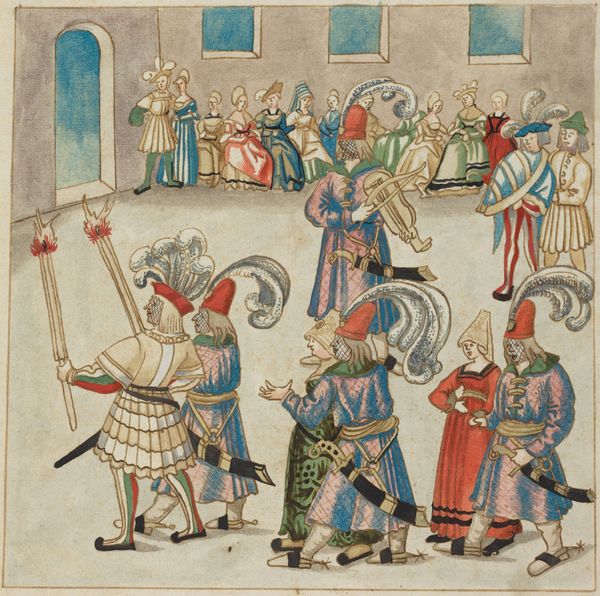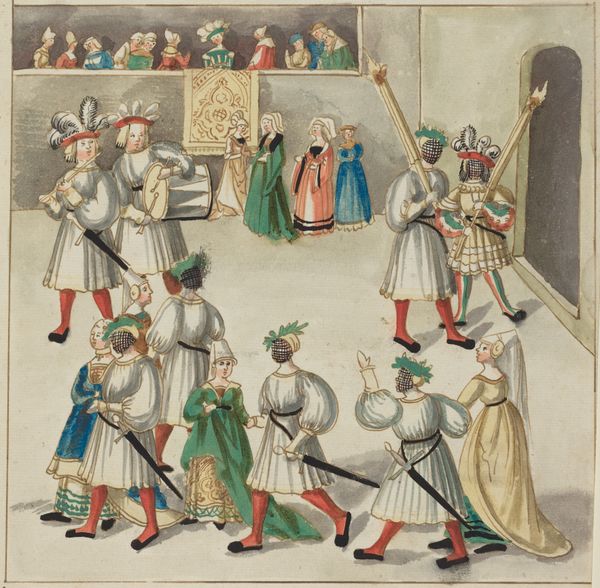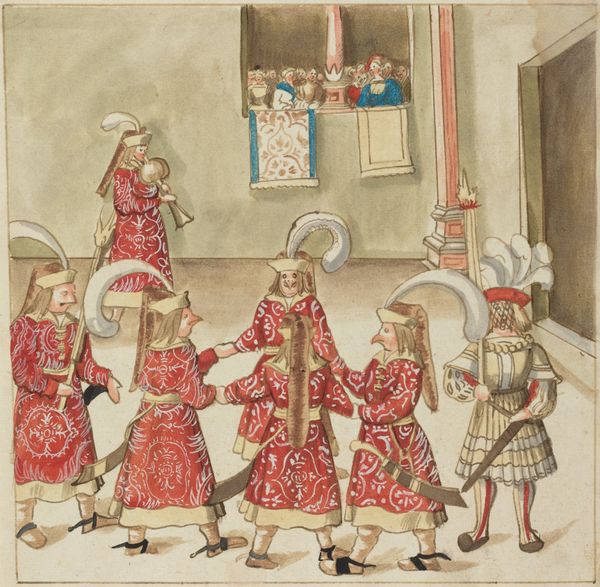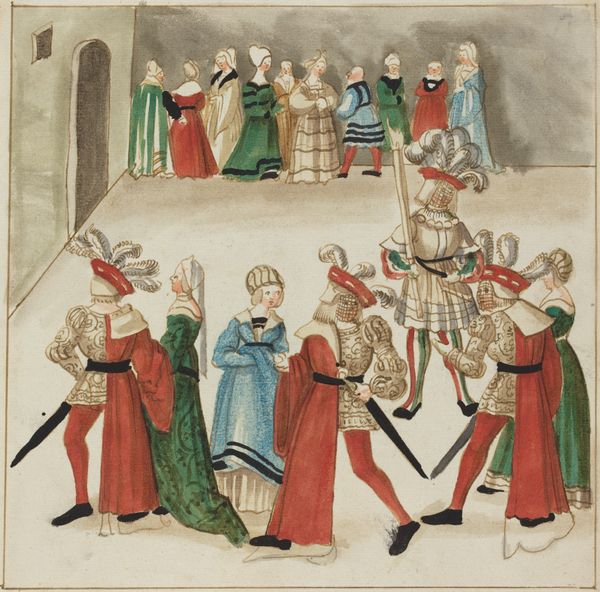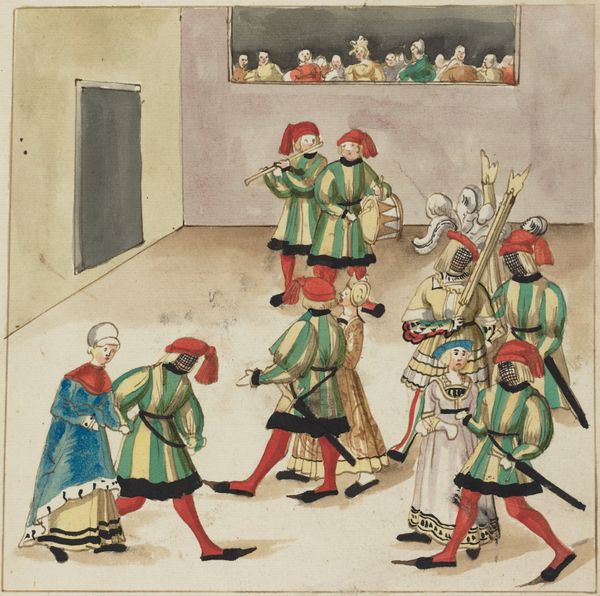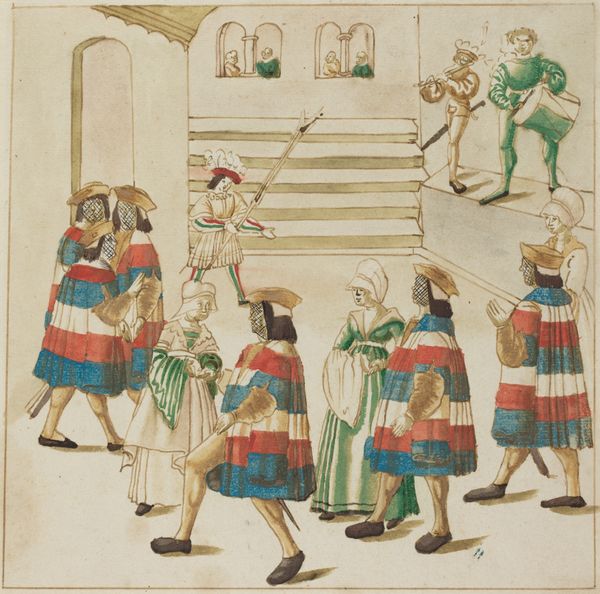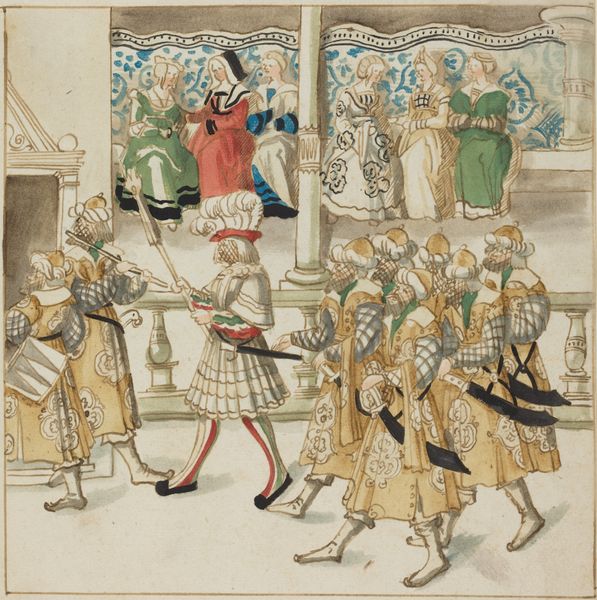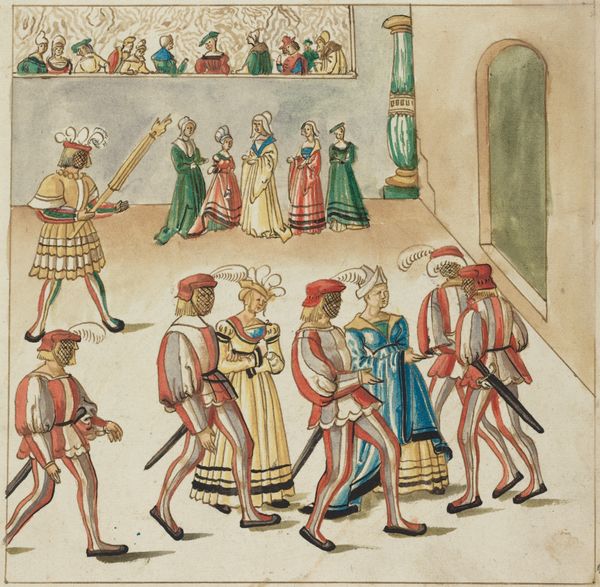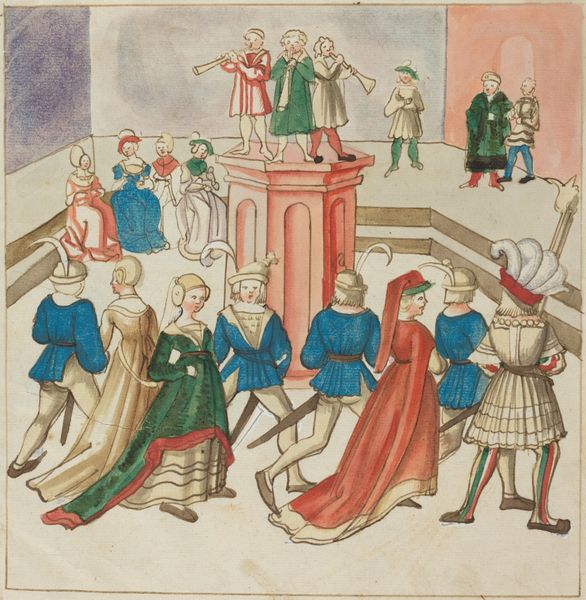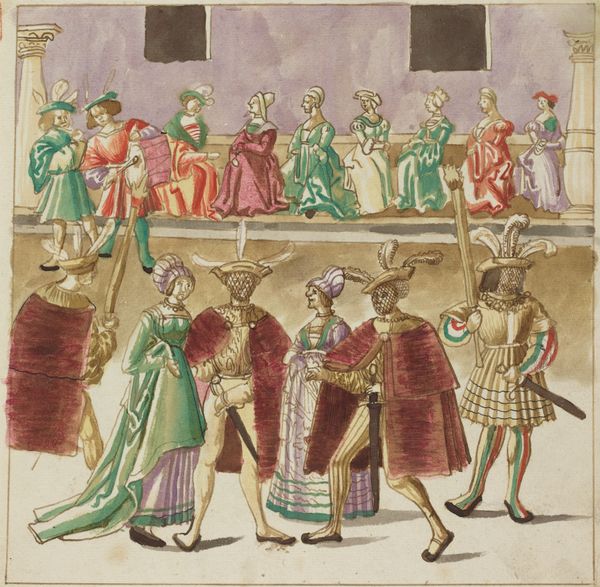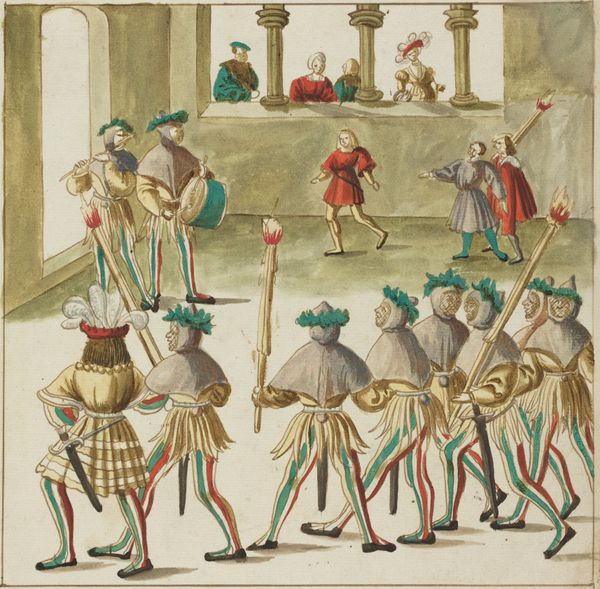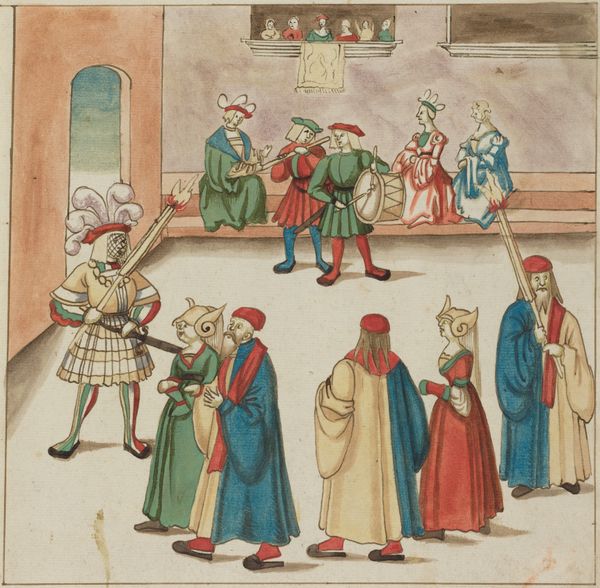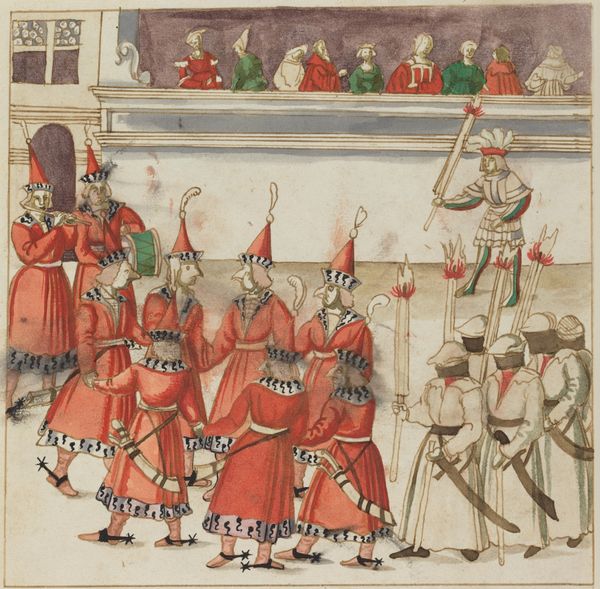
drawing, coloured-pencil, watercolor
#
drawing
#
coloured-pencil
#
figuration
#
watercolor
#
coloured pencil
#
genre-painting
#
early-renaissance
#
miniature
#
watercolor
Dimensions: image: 23.3 x 23.7 cm (9 3/16 x 9 5/16 in.) sheet: 33.7 x 26.5 cm (13 1/4 x 10 7/16 in.)
Copyright: National Gallery of Art: CC0 1.0
Curator: The texture almost looks woven. Editor: And now we come to "Masquerade," a work made circa 1512 to 1515 by an anonymous artist, executed in watercolor and colored pencil. It’s a wonderful example of Early Renaissance miniature genre painting. Curator: Miniature is right—there's such a concentration of detail, and the paper looks almost like fabric from how heavily the pigment sits. It calls into question the traditional hierarchies within art. This could easily have been produced in workshops specializing in decorative arts rather than a fine art atelier. Editor: Precisely! Look at the positioning of figures—an almost procession-like arrangement with masked participants and musicians processing before onlookers peering down from an elevated enclosure. We can read these formal choices alongside of the period’s carnivals and theatrical practices that temporarily blurred social boundaries. Curator: Right—even their garments! You can see the artist was quite preoccupied with clothing—observe the patterned stockings and elaborate frills on the characters' hems, their sleeves, and on their hats, even the long horn one of them is carrying appears as much as part of their garment as it is part of the retinue. Do you see any social messaging, there? Editor: Most certainly, the garb speaks volumes about performativity and the theatrical role-playing endemic to courtly entertainment. The masquerade provided a liminal space to question or perhaps even subvert the otherwise rigidly imposed social codes and status. And those elaborate textiles—the kind only nobility could procure! Curator: Indeed—consider what amount of labor was involved to procure such luxurious material back then, only for the people to adorn them once or twice before discarding it. "Masquerade", as an artifact, then also operates as evidence of overconsumption back then. Editor: Right, an opulence juxtaposed with moments of real precarity. Ultimately, the visual tension woven here creates more questions than answers. Curator: Agreed. Its physical qualities definitely add to the depth of meaning that we derive. Editor: Thank you for highlighting those layers. I think it reframes our perceptions entirely.
Comments
No comments
Be the first to comment and join the conversation on the ultimate creative platform.
